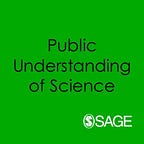Communicating Climate Change: The Path Forward
Review by Michelle Riedlinger
The key strengths of this book lie in the attention Priest pays to collective orientations to climate change, and in connecting important research work on social movements to climate change communication.
Susanna Priest takes up the challenge of moving climate change communication beyond communicating problems to mobilising action, aiming to inspire better communication and more relevant communication research to motivate publics. In her opening chapter, Priest urges communicators and researchers to take account of important social science findings about groups and collectives. Over the next four chapters she points to important social science theories and concepts that can explain the limitations of current and individually-focussed climate change communication strategies and research.
Priest draws on research that helps make sense of the lack of grassroots or localised climate change action. She contrasts this with other environmental issues such as species conservation where strong localised action occurs. She attributes the lack of climate change action to many factors, including “false balance” in media reporting, the cultivation of uncertainty, messages that communicate a lack of collective efficacy, group norms and attitudes towards corporate and environmental behaviour, and patterns of trust.
Priest’s message is hopeful when she points to institutionalised support for social and environmental policies in the US that were once considered extreme. But she also points to research showing that trust, local observations, political values, and cultural world views overshadow scientific knowledge, and make the US situation particularly problematic for climate change action. Group attitudes to economic and regulatory systems, to the environment, and to big-government systems are significant. To help address these group-related constraints, Priest calls for more support for “alternative” climate change communicators such as doctors, nurses and weathercasters.
Priest usefully draw attention to the influence of organisations and institutions, i.e. the news media, government, private and non-profit groups and corporations, in the “social ecology of science communication”. She describes this social ecology using key social science concepts, including agenda-setting, journalistic norms, communication ethics, and the medialisation of science, and she situates this discussion against the backdrop of the changing media landscape.
Chapter 5 focuses on the practices of a growing diversity of “knowledge brokers” and the expectations of active information seekers within this new media landscape.
Priest refers to important social science research findings on fear and efficacy messages, confirmation bias, motivated reasoning, and theories of information seeking and early adoption behaviour to argue that thoughtful readers and viewers are needed more than ever; readers and viewers need to be able to distinguish communication efforts “in the interests of scientific truth” from those “representing the interests of particular segments”.
Priest emphasises throughout this book that the public understanding of science is not the main issue hindering action on climate change. She points to strategic communication choices, motivated by various social processes, that are significant causes for inaction, for example, the strategic use of scientific uncertainty connected to fear and denial. However, chapter 6 on critical science literacy, appears to stand in contrast to this orientation, with an underlying assumption that a lack of understanding of how science works contributes to climate change inaction. Recent work on community-level science literacy, where only some key members of the community need to have a good understanding of the state of the relevant science for action to occur, could help connect science literacy to other important social processes.
The key strengths of this book lie in the attention Priest pays to collective (as opposed to individual) orientations to climate change, and in connecting important research work on social movements to climate change communication. Priest argues that a broad grassroots social movement dedicated to action is needed to put climate change back on the media and political agenda. Priest acknowledges the important contributions of Marshall Ganz on the need for a diversified resource base and a diversity of tactics but research organisations, scientists and science are conspicuously absent from this chapter. Research on collective efforts that combine science communication with social action, including action research with scientists who advocate and evidence-informed social movements, could make valuable contributions.
Priest’s call for communicators to consider climate as a social justice issue and to focus on collective efficacy and climate solutions is important for science communicators. This book provides an excellent foundation for communicators struggling to find effective ways to motivate action on climate change, and important directions for future research.
Michelle Riedlinger, Associate Professor, University of the Fraser Valley, Canada, focuses her research on community-led science communication in environmental areas, including air quality, water quality and fisheries sustainability. Her most recent relevant publication is: Davis, L., Fähnrich, B., Nepote, A.C., Riedlinger, M., & Trench, B. (2018). Environmental communication and science communication — same only different?
